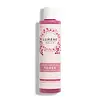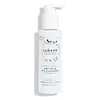What's inside
What's inside
 Key Ingredients
Key Ingredients

 Benefits
Benefits

 Concerns
Concerns

 Ingredients Side-by-side
Ingredients Side-by-side

Water
Skin ConditioningGlycerin
HumectantPEG-40 Hydrogenated Castor Oil
EmulsifyingPPG-26-Buteth-26
Skin ConditioningPrunus Amygdalus Dulcis Oil
Skin ConditioningVaccinium Vitis-Idaea Seed Oil
AntioxidantPhenoxyethanol
PreservativeEthylhexylglycerin
Skin ConditioningPropanediol
SolventAcrylates/C10-30 Alkyl Acrylate Crosspolymer
Emulsion StabilisingXanthan Gum
EmulsifyingCaprylyl Glycol
EmollientSodium Hydroxide
BufferingSodium Hyaluronate
HumectantGlucose
HumectantChondrus Crispus Extract
Skin ConditioningHelianthus Annuus Seed Oil
EmollientRosmarinus Officinalis Leaf Extract
AntimicrobialParfum
MaskingWater, Glycerin, PEG-40 Hydrogenated Castor Oil, PPG-26-Buteth-26, Prunus Amygdalus Dulcis Oil, Vaccinium Vitis-Idaea Seed Oil, Phenoxyethanol, Ethylhexylglycerin, Propanediol, Acrylates/C10-30 Alkyl Acrylate Crosspolymer, Xanthan Gum, Caprylyl Glycol, Sodium Hydroxide, Sodium Hyaluronate, Glucose, Chondrus Crispus Extract, Helianthus Annuus Seed Oil, Rosmarinus Officinalis Leaf Extract, Parfum
Water
Skin ConditioningC15-19 Alkane
SolventOleyl Erucate
EmollientPropanediol
SolventGlycerin
HumectantCaprylic/Capric Glycerides
EmollientBetula Alba Juice
AstringentCetyl Palmitate
EmollientPrunus Amygdalus Dulcis Oil
Skin ConditioningVaccinium Myrtillus Fruit Juice
Skin ConditioningSodium Stearoyl Glutamate
CleansingCaprylyl/Capryl Glucoside
CleansingAvena Sativa Kernel Oil
Skin ConditioningAvena Sativa Kernel Flour
AbrasiveCanola Oil
EmollientSaccharide Isomerate
HumectantSclerotium Gum
Emulsion StabilisingPhenoxyethanol
PreservativeMicrocrystalline Cellulose
AbsorbentCitric Acid
BufferingSodium Gluconate
Skin ConditioningXylitol
HumectantCellulose Gum
Emulsion StabilisingTocopherol
AntioxidantHelianthus Annuus Seed Oil
EmollientXanthan Gum
EmulsifyingEthylhexylglycerin
Skin ConditioningSodium Citrate
BufferingDecyl Alcohol
EmollientRosmarinus Officinalis Leaf Extract
AntimicrobialSodium Chloride
MaskingWater, C15-19 Alkane, Oleyl Erucate, Propanediol, Glycerin, Caprylic/Capric Glycerides, Betula Alba Juice, Cetyl Palmitate, Prunus Amygdalus Dulcis Oil, Vaccinium Myrtillus Fruit Juice, Sodium Stearoyl Glutamate, Caprylyl/Capryl Glucoside, Avena Sativa Kernel Oil, Avena Sativa Kernel Flour, Canola Oil, Saccharide Isomerate, Sclerotium Gum, Phenoxyethanol, Microcrystalline Cellulose, Citric Acid, Sodium Gluconate, Xylitol, Cellulose Gum, Tocopherol, Helianthus Annuus Seed Oil, Xanthan Gum, Ethylhexylglycerin, Sodium Citrate, Decyl Alcohol, Rosmarinus Officinalis Leaf Extract, Sodium Chloride
 Reviews
Reviews

Ingredients Explained
These ingredients are found in both products.
Ingredients higher up in an ingredient list are typically present in a larger amount.
Ethylhexylglycerin (we can't pronounce this either) is commonly used as a preservative and skin softener. It is derived from glyceryl.
You might see Ethylhexylglycerin often paired with other preservatives such as phenoxyethanol. Ethylhexylglycerin has been found to increase the effectiveness of these other preservatives.
Glycerin is already naturally found in your skin. It helps moisturize and protect your skin.
A study from 2016 found glycerin to be more effective as a humectant than AHAs and hyaluronic acid.
As a humectant, it helps the skin stay hydrated by pulling moisture to your skin. The low molecular weight of glycerin allows it to pull moisture into the deeper layers of your skin.
Hydrated skin improves your skin barrier; Your skin barrier helps protect against irritants and bacteria.
Glycerin has also been found to have antimicrobial and antiviral properties. Due to these properties, glycerin is often used in wound and burn treatments.
In cosmetics, glycerin is usually derived from plants such as soybean or palm. However, it can also be sourced from animals, such as tallow or animal fat.
This ingredient is organic, colorless, odorless, and non-toxic.
Glycerin is the name for this ingredient in American English. British English uses Glycerol/Glycerine.
Learn more about GlycerinHelianthus Annuus Seed Oil is the oil derived from the seeds of a Sunflower. Sunflower seed oil is non-fragrant. It is an emollient, meaning it helps to soften the skin.
Sunflower seed oil contains many fatty acids. The fatty acids found in sunflower seeds include (from highest amount to least): linoleic acid, myristic acid, palmitic acid, stearic acid, arachidic acid, oleic acid, and linolenic acid.
These fatty acids help the skin create ceramides. Ceramides play a role in repairing the skin barrier.
Helianthus Annuus Seed Oil helps moisturize the skin. This in turn helps the skin look more rejuvenated and smoother.
Sunflowers are rich in vitamin E.
Historians believe Indigenous cultures of North America domesticated sunflowers before corn. Thus they relied on sunflower oil for a variety of uses. One such use is moisturizing skin and hair.
Sunflower seed oil may not be fungal acne safe. We recommend speaking with a professional if you have any concerns.
Learn more about Helianthus Annuus Seed OilPhenoxyethanol is a preservative that has germicide, antimicrobial, and aromatic properties. Studies show that phenoxyethanol can prevent microbial growth. By itself, it has a scent that is similar to that of a rose.
It's often used in formulations along with Caprylyl Glycol to preserve the shelf life of products.
Propanediol is an all-star ingredient. It softens, hydrates, and smooths the skin.
It’s often used to:
Propanediol is not likely to cause sensitivity and considered safe to use. It is derived from corn or petroleum with a clear color and no scent.
Learn more about PropanediolPrunus Amygdalus Dulcis Oil comes from the sweet almond, a tree native to Iran. This oil has no fragrance and is non-volatile.
Almonds contain healthy fats, vitamins, and minerals. It is a rich source of Vitamin E, a great antioxidant and skin conditioning ingredient. Sweet almond oil contains fatty acids such as linolenic acid and triglycerides.
The content of sweet almond oil makes it a great emollient; it can help soften and hydrate your skin. Emollients create a barrier over your skin to trap moisture in. Sweet almond oil has antioxidant properties.
Those with an almond allergy should be careful of this ingredient and speak with a professional about using it in your skincare.
This ingredient may not be fungal-acne safe.
Learn more about Prunus Amygdalus Dulcis OilRosmarinus Officinalis Leaf Extract comes from rosemary. Rosemary is native to the Mediterranean.
While Rosmarinus Officinalis Leaf Oil can be volatile due to its fragrant properties, the fragrance components are usually removed in the leaf extract.
Rosemary Leaf Extract contains many antioxidants such as rosmarinic acid and caffeic acid. Rosemarinic acid, a compound found in rosemary leaf, has been found to help soothe skin conditions such as eczema and acne.
Learn more about Rosmarinus Officinalis Leaf ExtractWater. It's the most common cosmetic ingredient of all. You'll usually see it at the top of ingredient lists, meaning that it makes up the largest part of the product.
So why is it so popular? Water most often acts as a solvent - this means that it helps dissolve other ingredients into the formulation.
You'll also recognize water as that liquid we all need to stay alive. If you see this, drink a glass of water. Stay hydrated!
Learn more about WaterXanthan gum is used as a stabilizer and thickener within cosmetic products. It helps give products a sticky, thick feeling - preventing them from being too runny.
On the technical side of things, xanthan gum is a polysaccharide - a combination consisting of multiple sugar molecules bonded together.
Xanthan gum is a pretty common and great ingredient. It is a natural, non-toxic, non-irritating ingredient that is also commonly used in food products.
Learn more about Xanthan Gum